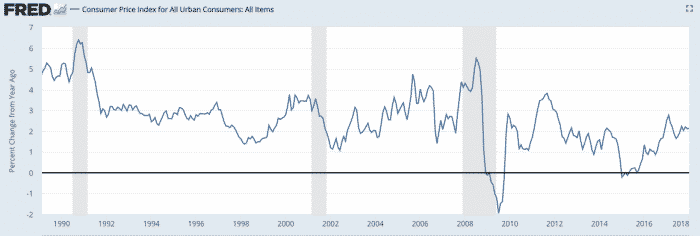Inflation data reinforce expectations for more Fed rate increases
The inflation data released this morning were above expectations, both headline and core numbers. Bond and equity markets sold off on the data. This was the first major US dataset released after the recent market correction. So, the prospect of continued market volatility is high as the Fed proceeds on its stated policy path. It will pause only if the data deteriorate.
The headline inflation number showed an increase of 0.5% in consumer price inflation in January. An increase of 0.3% was expected. The core number increased 0.3%. An increase of 0.2% was expected. The +0.54% month-on-month increase is the highest monthly increase in the US CPI index since February 2013. But this is just one month’s data. And these are not terrible numbers. The figures bring CPI up to 2.1% over the past year, with core CPI rising 1.8%. What worries the market is how they play into Fed rate policy.

At the same time, retail sales numbers came out. They were poor, with the headline for January down 0.3%. Ex-autos, retail sales remained unchanged. December data revisions were down. Both of these numbers were below expectations. Remember that household savings rates are low and wage growth for non-supervisory workers is only 2.4%. Weak retail sales numbers may be a sign of consumer exhaustion. Without higher wage growth, watch for signs of weakness in retail sales and consumption.
So, is this just noise? I think we need 6 months to find out. At a minimum, the rise in inflation is necessary but not sufficient to force the Fed to tighten even more aggressively than it has forecast. In the coming days, we should watch for signs of change in Fed forward guidance.
Last week a 10-year Treasury yield of 2.85% triggered panic. And interest rates went back down. But we can still see interest rates march much higher. As inflation expectations increase, the interest rate that investors will accept will climb slowly. Along the way, we will see episodes of volatility as the market resists the move higher in yields. At some point, this will have an impact on the real economy. But it isn’t clear how high yields must go for that to happen. In the meantime, investors will have a rough ride.
Comments are closed.